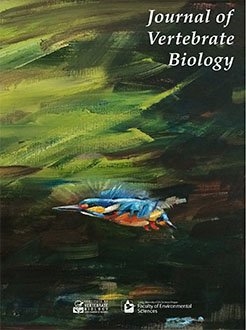Faunal studies of rodent assemblages from the areas on and around Choke Mountain (north-western Ethiopia) were conducted during two field seasons in 2012 and 2018. Here we present results of a genetic study of nine rodent species, and evaluate their genetic diversity and evolutionary relationships between conspecific populations from neighbouring montane massifs. Results of comparative analysis of phylogeographic patterns in Lophuromys, Desmomys, Stenocephalemys and Tachyoryctes have emphasized the role of the Blue Nile gorge as a strong biogeographic barrier, separating “northern” and “southern” independently evolved populations. Results of genetic analysis also revealed the presence of a new taxon of Dendromus, presumably belonging to a new species. Our study allows re-evaluation this area as an important “hotspot” of Ethiopian small mammal biodiversity.
How to translate text using browser tools
19 June 2020
Rodents of Choke Mountain and surrounding areas (Ethiopia): the Blue Nile gorge as a strong biogeographic barrier
Danila S. Kostin,
Aleksey A. Martynov,
Valeria A. Komarova,
Dmitriy Yu. Alexandrov,
Mesele Yihune,
Mohammed Kasso,
Josef Bryja,
Leonid A. Lavrenchenko

Journal of Vertebrate Biology
Vol. 69 • No. 2
June 2020
Vol. 69 • No. 2
June 2020
biogeography
Ethiopian Highlands
Lophuromys
small mammals
Stenocephalemys




